The content of the article
The neck is the most mobile part of the spinal column. It performs many important functions - the main blood arteries and nerve trunks pass through it. The neck connects the brain and spinal cord. At the same time, the mobility of the muscular frame and the cervical spine itself makes the neck very vulnerable. Even minor violations lead to serious consequences. For example, if a nerve is pinched in the cervical spine, the blood supply to the brain is disturbed, hypoxia develops with severe headaches and a serious deterioration of well-being. That is why you need to be very careful about the state of health of the neck. And the crunch when turning the head - one of the first alarm bells. In this article we will talk about the physiological and pathological crunch in the neck, the reasons for its occurrence and how to treat this symptom.
Why when turning the head there is a crunch in the neck
A crunch in the neck when turning the head can be physiological and pathological. Physiological is most often associated with the individual characteristics of a person or with external adverse effects. Such a crunch usually passes painlessly and brings only psychological discomfort. The pathological crunch is more dangerous because it testifies to various diseases in the body that are associated with the spinal column. With many diagnoses, the patient feels not just a crunch, the movement of the neck is rather difficult, the pain can be pulling, acute or dull. So, let's try to understand the reasons for the appearance of crunch in the neck.
- Intervertebral disc mobility. In this case, the joints have greater mobility due to the patient’s excessive leanness and low mass of the muscular corset. In principle, such a crunch does not pose any danger.
- Static position. Very often the neck crunches after a long stay in a static position. This can be both lying on the couch, and long work on the papers.
- Air bubbles. A crunch in the neck is not always associated with the joints or bones.Sometimes sound can come from the collapse of small bubbles of carbon dioxide or nitrogen in the periarticular fluid.
- Harsh loads. A crunch in the neck very often occurs in athletes during a workout, if a person from the very beginning puts himself under severe stress. It is dangerous for ligaments and joints - they can be damaged. In no case can we neglect the warm-up, after it a crunch in the neck will not bother you.
- Salt If a large amount of salt accumulates in muscles and tendons, this leads to calcification (hardening) of tissues. Such a crunch is usually not accompanied by pain and particular discomfort.
- Spondylolisthesis. This is a disease that is characterized by displacement of the upper vertebrae relative to the underlying structures of the spine. The vertebra can move forward, backward or sideways. The crunch in spondylolisthesis arises precisely because of the displacement of the vertebrae and the lack of clear links between the bone structures. The disease can occur against the background of abnormal development of the spinal column, heredity, weakening of the muscles of the vertebral corset, injuries, etc.
- Uncovertebral arthrosis. This is a disease in which the cartilage tissues between the vertebrae are destroyed. In this case, the crunch when turning the head is accompanied by acute pain in the upper spine. The disease can be triggered by spinal injury, flat-footedness, complication of poliomyelitis, the course of the disease is complicated in terms of excess weight and sedentary lifestyle of the patient.
- Rachiocampsis. Any curvature of the physiological curves of the spine can lead to the appearance of a crunch in the neck when turning the head. Disruption of healthy posture leads to disproportions and displacement of intervertebral discs.
- Osteochondrosis. This is one of the most frequent diagnoses associated with dysfunction of the cervical spine. This is a lesion of the articular cartilage and bone tissues that are under them. The disease most often occurs against the background of increased load on the spine, lack of vitamins, internal changes in the body (hormones, heredity, age, etc.).
- Herniated intervertebral disc. Hernia is a complication of osteochondrosis, in which the fibrous ring of the intervertebral space is broken and protrusion of the intervertebral substance occurs. With this diagnosis, a crunch in the neck when moving appears constantly.The disease may occur due to injuries, physical inactivity, excessive load on the spine (obesity, heavy exercise, etc.), vibration, and infection of the spinal tissues.
- Spondylosis. This is a disease in which ossified tissues grow on the spinal column. They block the movement of the vertebrae, narrow the lumen of the spinal column, pinch the nerve endings. When turning the head, except for a crunch in the neck, the patient usually feels the difficulty of movement.
As you can see, it is quite difficult to determine the cause of the crunch in the neck when turning the head. If the crunch is insignificant and appeared after a static position, hypothermia, or high load, but most importantly, if the crunch is not accompanied by pain, then you can fight it yourself. In a situation if the disease proceeds with serious discomfort and pain, you need to consult a doctor. The spine is involved in a vertebrologist, but first you can turn to a therapist or orthopedist.
How to treat a crunch in the neck when turning the head
First of all, you need to determine the cause of this crunch.Sometimes it is enough to get rid of the annoying factor to completely suppress the development of symptoms. If the cause of the crunch lies in the thinness and low muscle mass of the vertebral corset, you just need to do more work, actively move, do special exercises for the neck, which we will tell you about later. They will strengthen the muscles around the spinal column, the discs will be more stable and strong. Be sure to change the degree of load on the cervical spine. Weeding the kitchen garden and lying in a bed are equally harmful if an excessive load or muscle relaxation lasts more than three hours in a row. Therefore, it is necessary to change the type of activity. Sit at the computer? Do not forget to get up and walk for 5 minutes every hour. Watch TV on the couch? Do at least elementary exercises and tilts of the head so that the neck does not numb and the vertebrae move.
Any physical activity should start with a warm-up, it is a prerequisite not only for professional athletes, but also for beginners. If the crunch in the neck appeared after it blew, warm compresses, massage and light gymnastics will help.With the unexplained nature of the disease, you can get rid of the crunch and pain in the neck with the help of non-steroidal anti-inflammatory drugs (Nimesil, Diclofenac). Warming compresses help very well - you can iron a diaper or a sheet with an iron, apply warm tissue to a sore spot. Alcohol and boiled potatoes, crushed to a state of mashed potatoes, have an excellent warming effect. You can warm the sand or salt in the pan, pour everything into the bag and apply it to the painful areas of the neck until it cools. If all these methods do not suit you, just buy warming anti-inflammatory ointments - Dolgit, Fastum gel, Finalgon, Kapsikam, etc. They will relieve not only of the crunch, but also help to cope with the pain.
Neck crunching exercises
Most spinal disorders are caused by a lack of movement. If you have sedentary work, you do not walk or even do exercises, your back muscles gradually weaken, atrophy, the spine is not able to hold itself in the correct position. All this leads to displacement of intervertebral discs, thinning of cartilage and articular tissue, various osteopathic diagnoses. Especially if hypodynamia is accompanied by overweight.
To get rid of all these problems, improve health and improve mood, you need to play sports, move more. However, it is important to be careful here, only sparing loads are permissible. In relation to the diagnosis, it is necessary together with the doctor to select acceptable sports. For example, swimming is very useful - in the water, the load on the spine is reduced, it is much easier to strengthen the muscles. For any back and neck problems, it is helpful to swim at a moderate pace. In addition, sparing types of loads are permissible - Pilates, body flex, and yoga. No strength training and weight lifting is very dangerous!
An active lifestyle means not only playing sports. You need to completely revise your life principles and preferences. Reject at least for some time from the car or leave it in the parking lot away from the house to walk. If you go by public transport, goes a couple of stops earlier. Get a dog to walk it morning and evening. Walking is very useful for the spine and heart. Spend more time with children in the fresh air, go on picnics, go to the mountains and the forest, choose active types of recreation.All this will help you gradually form a muscular corset that can easily support your spine. If the pain in the neck and the crunch already interfere with your life, you need to do gymnastics twice a day, which will produce results in a week.
Bend your head forward, backward, left and right.
Rotate your head in one and the other side, drawing a circle of maximum diameter.
Push your head forward, pulling your chin as far away from you as possible, then press your chin to your chest.
Press hard with your palms on the forehead, and the head and neck muscles should stand up. That is, the exercise is static, but it is always performed at the limit of possibilities.
The same exercise, but now the palms do not hold the forehead, but the back of the head, the neck muscles crush back.
Take the head from above with one hand so that the right hand is near the left temple. Tilt your head as far as possible to the right, carefully helping your hand. Repeat the exercise from the opposite side.
To improve blood circulation in the tissues will help high-quality massage. An experienced specialist will ask you about the diagnosis and will perform the necessary procedures in accordance with it. If you are doing the massage yourself, just try to stretch the collar area and neck. It is great to do massage with camphor oil - it not only eliminates friction, but also perfectly warms the tissues. After such a massage, it is necessary to warm the treated areas and not go out for about an hour. In the fight against diseases of the spine it is useful to do various physiotherapeutic procedures - electrophoresis, magnetic therapy, laser therapy, exposure with the Dorson device.
In the fight against diseases of the back prevention is very important. During the day, you need to change the position of the head and neck many times, warm up regularly, you can do simple exercises even at your desk. Pay attention to your desk chair - it should be comfortable, the back should competently support the lower back, shoulder blades and head. You need to monitor your posture all the time.A quality bed, an active lifestyle and a balanced diet will help you avoid back problems!
Video: crunch and clicks in the neck




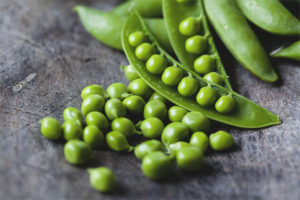

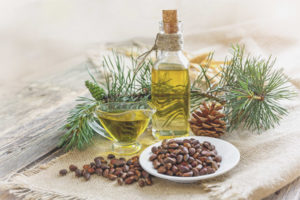

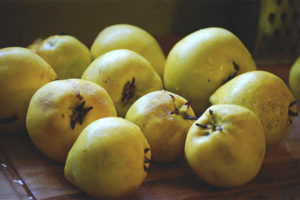

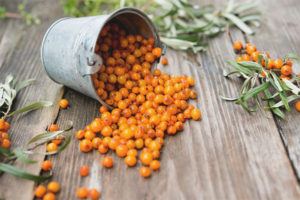
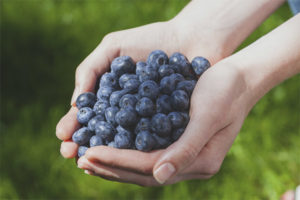
To send